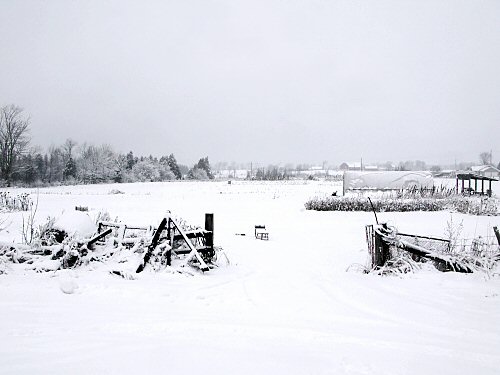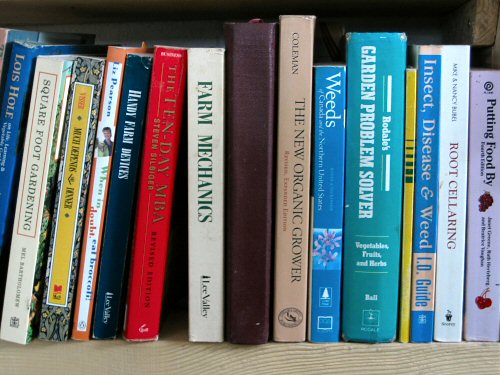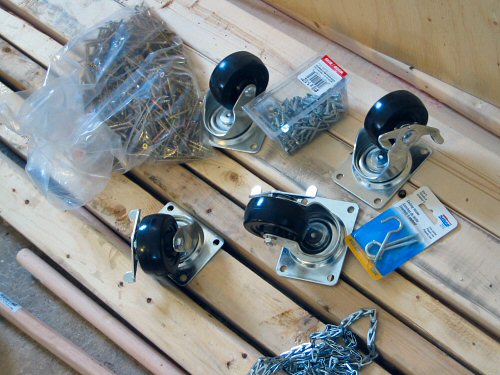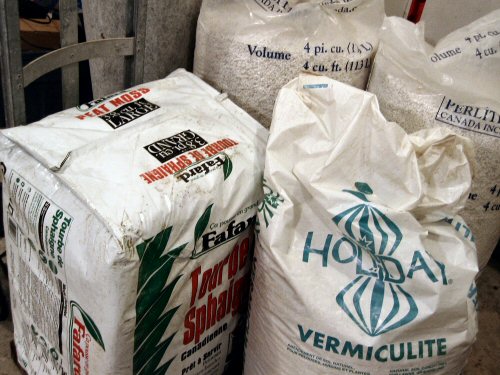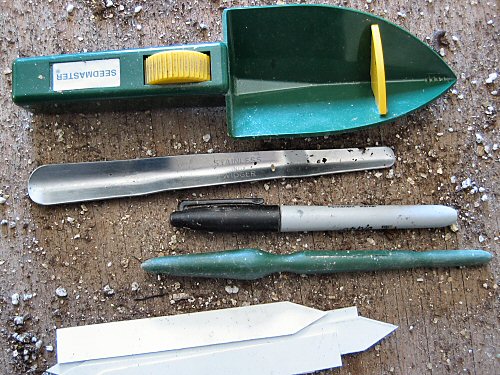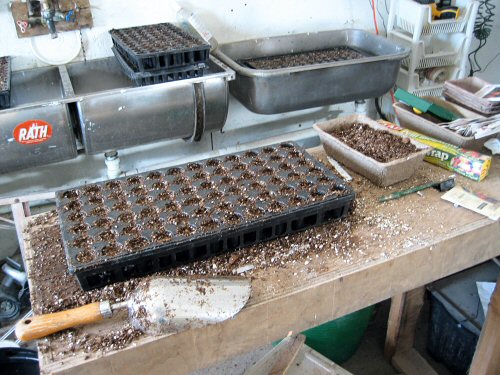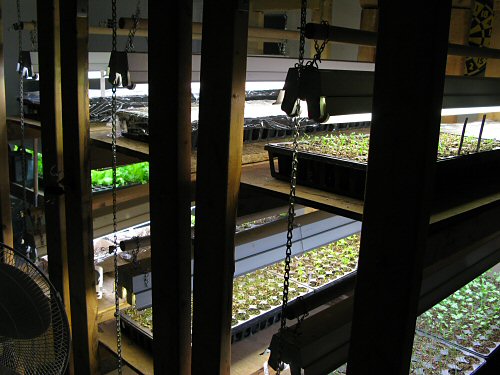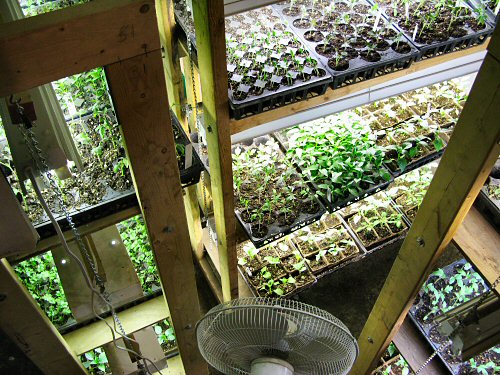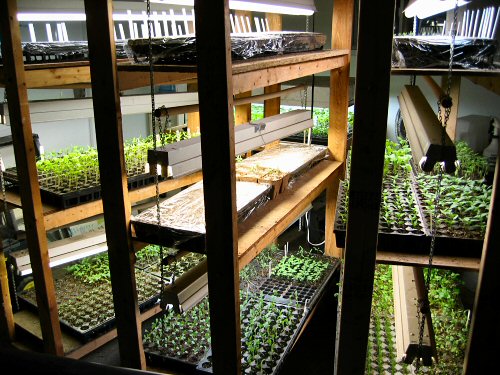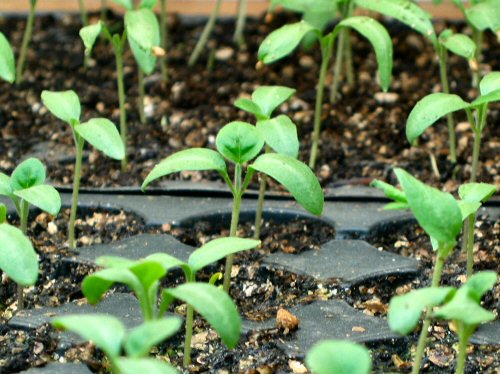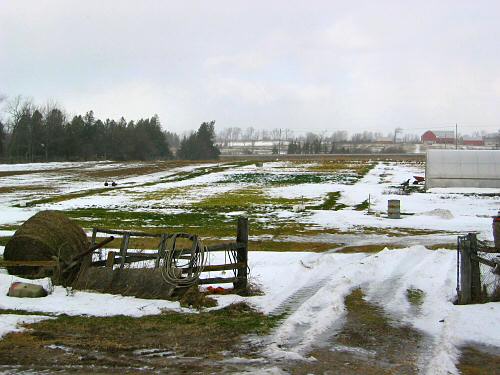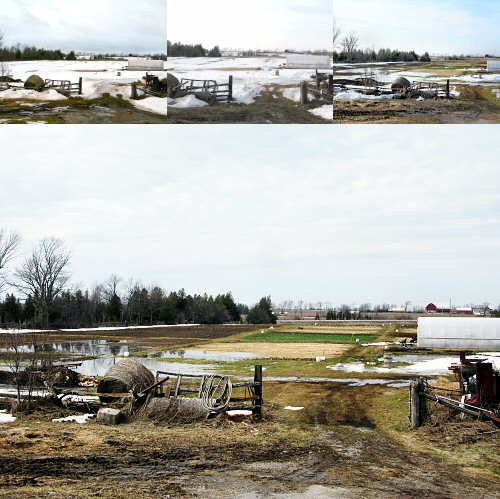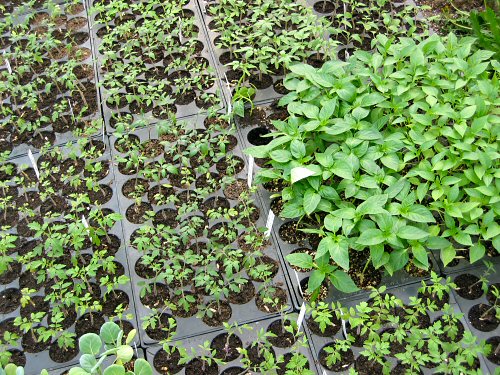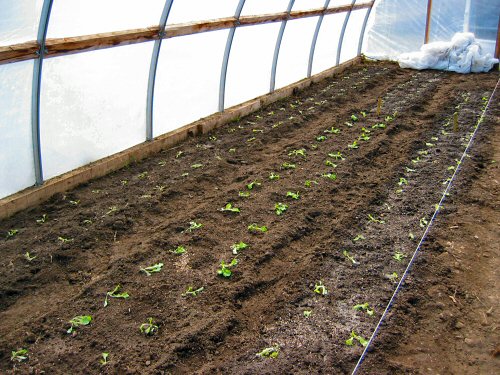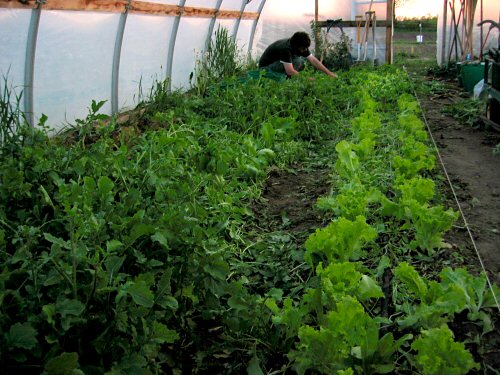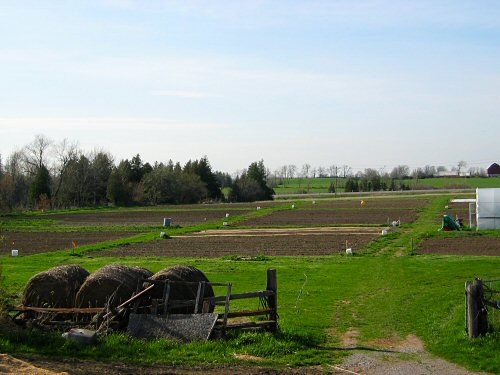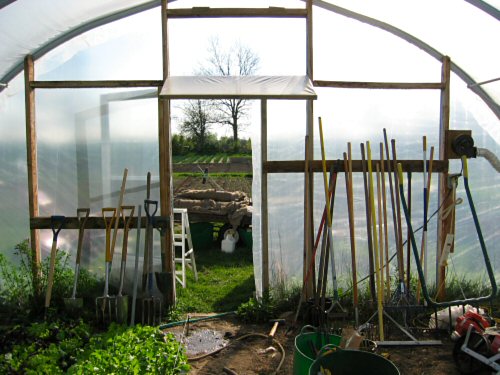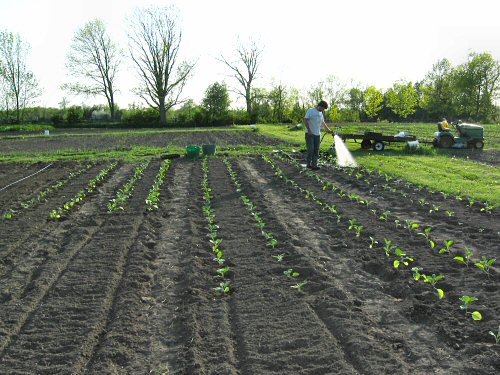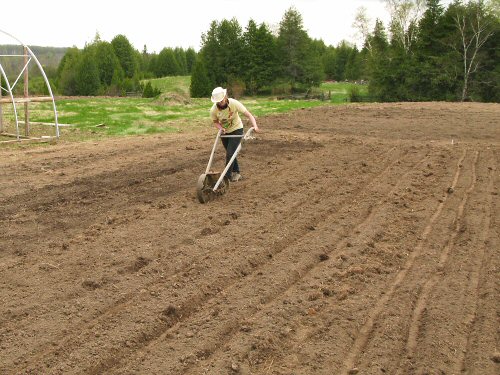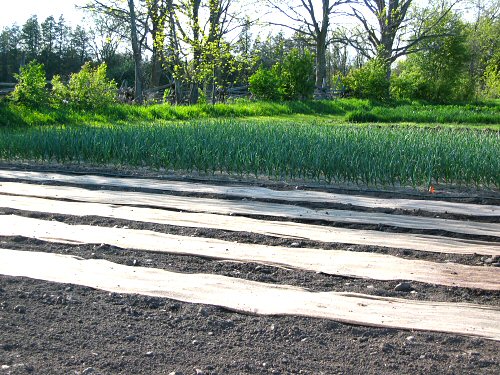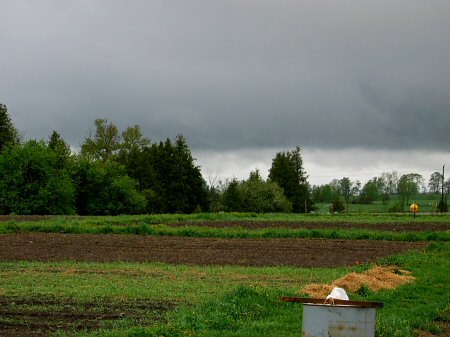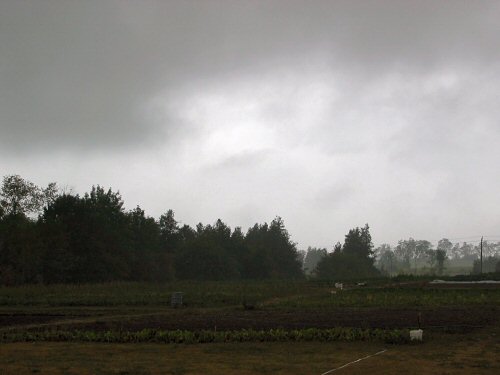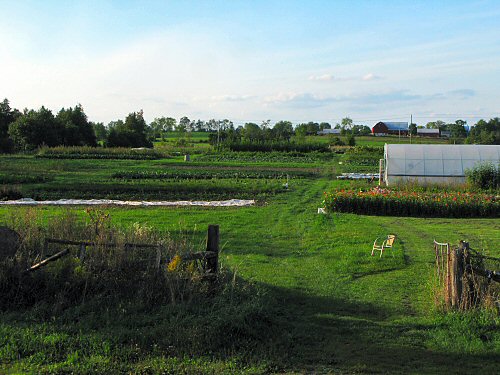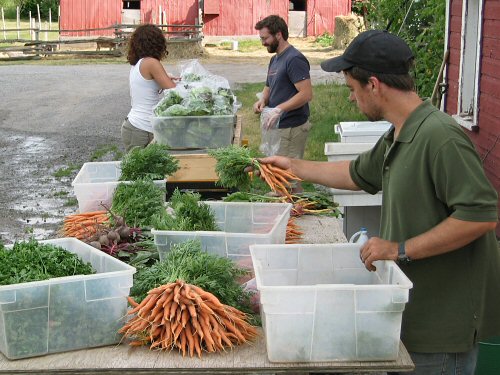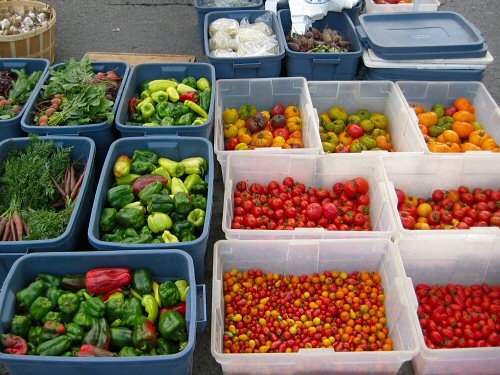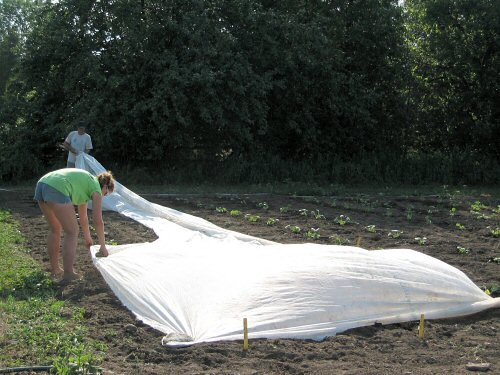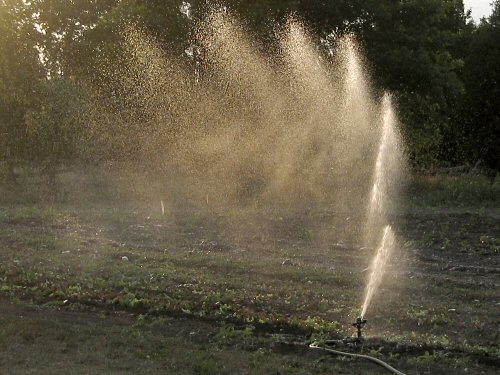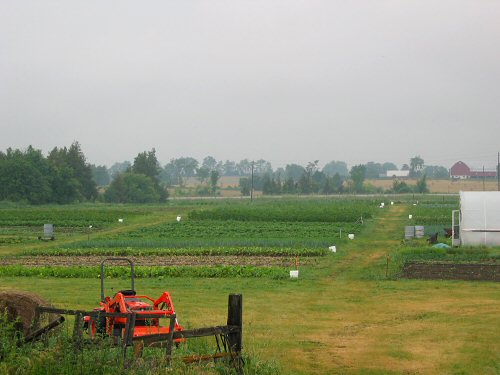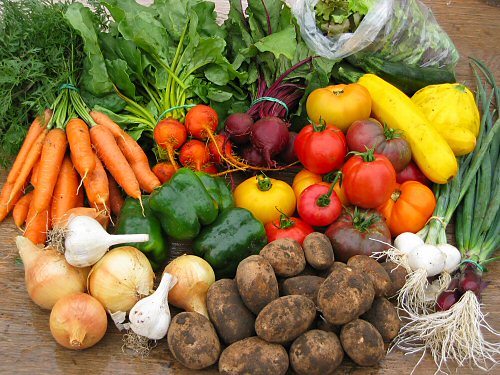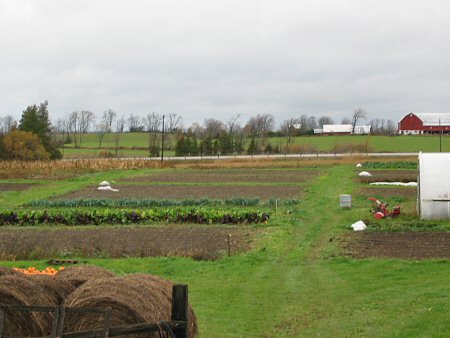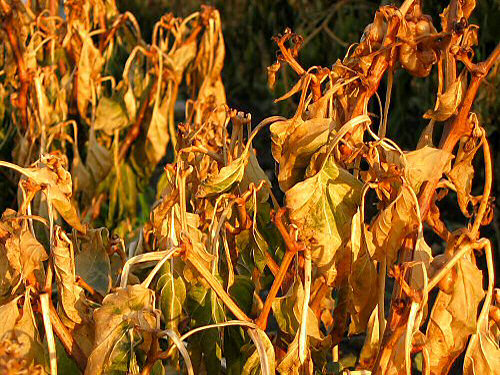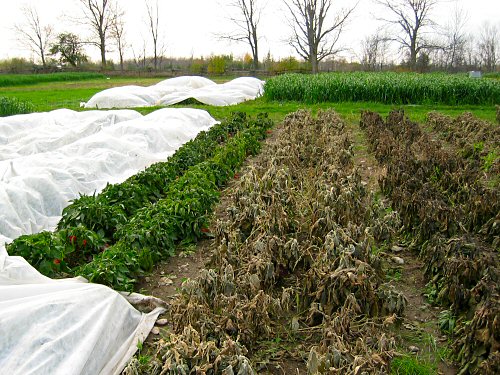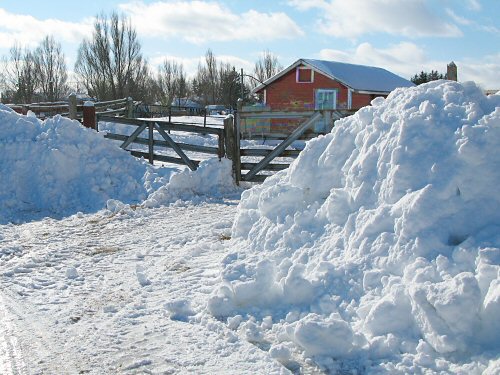Here is a DIY tiny farming crash course, in three parts, on one page. When you figure out how to do something, there’s a natural urge to pass on what you’ve learned. That’s the case here, with what I’ve gathered about small-scale farming. This is pretty much everything you need to know to start growing food!
Part 1: Basic info covers soil, plants, weather, tools, and so on, even chickens.
Part 2: A simple system is a tool for getting organized. With so many different things to do on a farm, it’s easy to get swamped. Having a way to decide what to do next is a huge help.
Part 3: A quick tour is a virtual look around this farm, using this blog. There are over a thousand illustrated posts. You can see most everything that goes on.
There’s no particular order to follow. Start at the beginning and go through in order is what we’re usually taught to do. You can also browse here and there, let questions and ideas that pop into your head lead you. Whatever way you go about it will work out, as long as you keep at it!
Part 1: Basic info
These are links to pages on various web sites. Most contain their info on a single web page. Read them all and you’ll have a solid understanding of veggie farming basics. Extra, extra: raising chickens for eggs and meat!
- Equipment needs for veggie farms – Detailed equipment requirements for various sizes of veggie farm (absolutely accurate!).
- Get to know your soil – The basics of soil composition and how it affects plants. This is textbook-y, which in this case is good! Get the core terminology and concepts down in one shot!
- Weeds as soil indicators – Determine soil condition by seeing what plants are naturally growing on a piece of land.
- Plant disease basics – A light introduction to plant pathology.
- Insects & insect pest control basics – Practical entomology for gardeners, in a nutshell.
- Plant naming explained – Common names vs botanical names, and how plants are named.
- Edible flowers – General notes and an annotated list of ornamental, veggie and herb flowers that you can eat.
- Crop rotation for vegetables – A practical summary (and how-to) of an ultimately complex and complicated subject.
- Seed germination basics – Essentials of seed and seedling biology and practice.
- Seed storage times – Chart shows how long seeds last (estimates for some veggies vary quite a bit by source; when in doubt, do a germination test).
- Seeds per gram – Chart showing number of seeds by weight for (North American) garden veggies.
- Veggie planting chart – Basic veggie planting info: seed quantity, spacing, depth, yield, more…
- Vegetable growing guide – Individual single-page guides to growing 58 garden vegetables. (If you get a page warning, continue. It’s safe.)
- Seed saving basics – A good intro to this big subject, with enough hands-on info to get started right away.
- Irrigation 101 – A solid intro to small farm irrigation basics.
- Root cellar basics – A practical intro to root cellaring and long-term veggie storage.
- Rainfall calculator – How many gallons is one inch of rain on one acre of land? Questions like these, easily answered here.
- Sunrise and sunset (daylength) calendars – Sunrise/sunset and moon phase calendar for anywhere in the world.
- Weather averages – Monthly average and highest/lowest stats for temperature, precipitation, wind, etc, for any location, worldwide (for what it’s worth :).
- Moon planting guide – Planting according to the phases of the moon may be worth a try.
- Chicken eggs FAQ – Answers to the most likely egg questions.
- Raising chickens for meat – An intro to small-scale raising of meat birds, not a detailed how-to, but a good summary that accurately covers all the basics.
- Poultry butchering – A step-by-step, illustrated guide, with lots of alternatives and general information.
- Biodynamic agriculture explained – The best intro to biodynamic farming that I’ve found, all on one page, and illustrated, too…
- Marketing online – Save on time, money and distraction by sticking to the essentials for web sites and social media.
If you run into cool pages that you think belong here, or a better one than one of those listed, please let me know!
Part 2: A simple system
Growing food involves many different tasks and skills every day. Weather makes everything unpredictable. And there are always several things you could be doing at once. Getting disorganized and falling behind are…common. The more that happens, the more work you have to do to catch up. It can easily spiral (and it usually does…but don’t worry, put in your best effort and it will work out!).
A few years ago, after I’d been farming for a while, some words popped into my head, describing what I was doing that made things work reasonably well. Small-scale farming in a nutshell. The words were: Watch, Water, Weed, Don’t wait, Clean up. What to do every day, in that order of priority.
Since then, I’ve thought about them over several seasons, and they do seem to cover…everything. They’re in order of priority, first things first. Where should I start, what should I do next. It works to organize your day, and for longer periods as well.
Watch: Before doing anything else, take a look around. Walk through the field, observing. Literally. In a one- or two-acre veggie garden, the daily tour might average 15-30 minutes. Some days, more time will go by as you stop to check for specific things. For example, you may want to spot check the undersides of the leaves on some of your potato plants, looking for Colorado potato beetle eggs, to get them early. This won’t be every day. As you gain experience, you’ll adjust and streamline your garden tour. Just do it every day! It is so the opposite of a waste of time, because you’ll catch things early.
Water: If anything needs to be watered, do that first. Again, experience will make more sense of this. And there are different conditions to take into account. If you’ve set up drip tape for the season, watering may be as simple as opening a tap. If you’re dragging around hoses, the same watering is a much more time-consuming, labor-intensive job. You’re looking for the obvious watering needs. For example, if string beans are just starting to flower, or if the carrot seeding is starting to dry out even though it’s under cover, these are critical moments where timely watering will make a HUGE difference.
Weed: The next priority is weeding. Don’t delay, weed today. The same ideas in Water apply here. With experience, you’ll get to know your weeds, how they grow under different weather conditions. It’s the easiest decision to put off weeding when the weed plants are tiny specks, but that’s the time to do it! A half hour or hour of easy scuffling or wheel hoeing can (and will) become hours of hand weeding in as little as a few days or a week or two. It’s stunning how fast weeding time multiplies as the little guys settle in and get down to growing.
Don’t wait: Among all the things to do, you’ll notice yourself putting some of them off. Don’t. This is built in to the previous three…rules. You don’t want to wait on any of them. It also applies to the many other projects and tasks: building, repairing, calling, filling out, looking up, the list goes on. You’ll often know what is the next thing you’d like to have done, but something makes you want to put it off. Maybe you’re not clear on the how-to, or you think it’s important but aren’t sure. This is where you don’t want to wait, just get on with it. If in the end it doesn’t get finished, fine. But don’t put things off all in your mind.
Clean up: A place for everything, and everything in its place. Put things back after you use them. The critical thing here is to actually have a place for everything. It could be as simple as banging a nail into a doorframe and hanging your tractor key on it. That’s the place for that key. It’s mostly about always knowing where to find things when you need them, not about appearances and keeping things looking nice and neat.
Part 3: A farm tour
If you’d like to take a look around a tiny farm, you can browse the posts on this blog by subject, to see how one person (me!) has gone about it. Get an idea of planning, building & fixing, seed starting, harvest, and other topics. I wouldn’t call them Best Practices, but I can say from experience that they got the job done. You need to start somewhere!
This slideshow provides the highlights of one full farm year here. Use mouse or swipe to move around.
Resources (bonus!)
Links to companies that make tools and other tiny farming necessities. Only a couple to start with…
